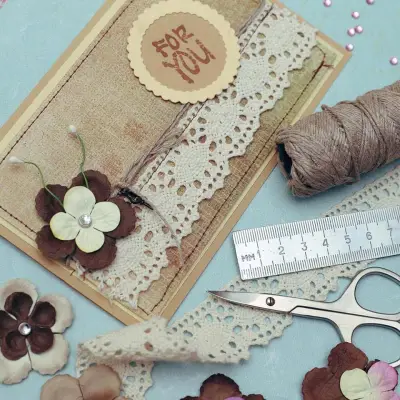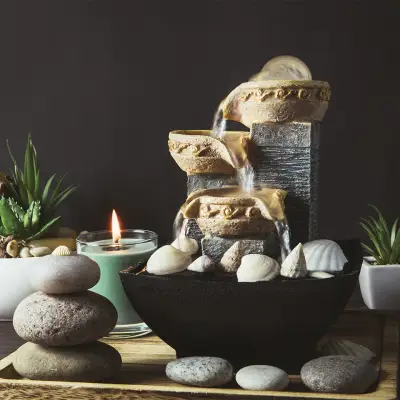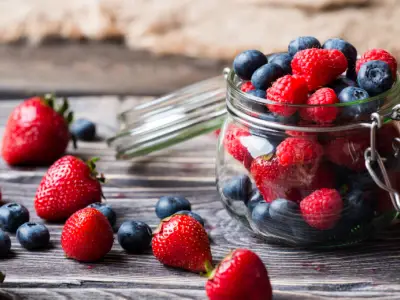There’s something undeniably satisfying about cutting into a perfectly baked cake and seeing a soft, springy crumb. The kind of texture that’s light, fluffy, and gently bounces back to the touch. If you've ever taken a bite of your homemade sponge only to find it dense or dry, you’re not alone – it’s a common frustration.
You might be wondering how to make a cake fluffier or why your cakes sometimes turn out dense despite following the recipe to the letter. This guide shares simple, effective tips to improve your bakes and help you create cakes with a beautifully light texture and plenty of moisture.
Jump to:
- What Makes a Fluffier Cake?
- Cream Your Butter and Sugar Thoroughly
- Don’t Overmix After Adding Flour
- Use the Right Leavening Agents (And Make Sure They’re Fresh)
- Beat Eggs Properly
- Sift Dry Ingredients
- Check Your Oven Temperature
- Measure with Accuracy
- Don’t Overbake
- Try Using Buttermilk or Yoghurt
- The Role of Fat: Butter, Oil, or Both?
- Use Cake Flour if Available
- Keep Ingredients at Room Temperature
- How to Rescue a Dense Cake
- Summary: How Can I Make My Cake Light and Fluffy?
- Study Our Cake Baking and Decorating Diploma for £29
Recommended for you!
Best SellersWhat Makes a Fluffier Cake?
To understand how to make a cake fluffier, it helps to know what actually causes that soft, light texture. It’s all about air – and how well it’s trapped in your batter. When air is whipped into ingredients like butter, sugar, or eggs, and then properly supported by flour and baking agents, it expands in the oven and creates that delightful rise. There are a few key players that help create and keep that airiness:
- Creaming butter and sugar creates air pockets.
- Beating eggs properly adds volume.
- Leavening agents like baking powder or bicarbonate of soda release gases when heated.
- Flour and structure trap air and help hold the cake’s shape.
Why are cakes dry and heavy when you’ve followed all the instructions? The answer usually lies in how the ingredients are handled rather than what’s actually in the recipe.
Now that we know what contributes to fluffiness, let’s look at the steps you can take to make sure your cake rises to the occasion.
1. Cream Your Butter and Sugar Thoroughly
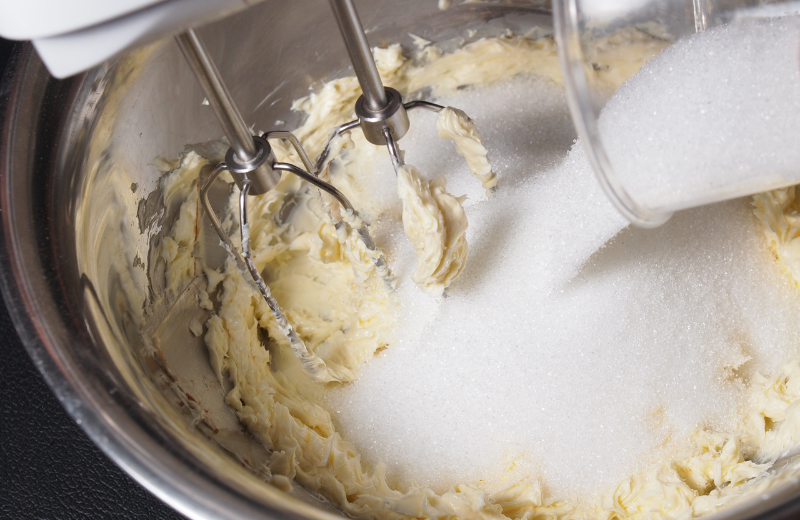
Creaming butter and sugar until pale and fluffy is an essential step. This process traps air bubbles in the fat, which then expand in the oven and help your cake rise.
Use softened butter and beat it with your sugar for several minutes until the mixture becomes noticeably lighter in colour. If you cut this step short, you’re far more likely to end up with a dense cake.
This is one of the easiest ways to improve your results if you’re trying to figure out how to make a cake fluffy and light.
2. Don’t Overmix After Adding Flour
While thorough mixing is important at the start, once the flour goes in, it’s time to take things slow. Overmixing at this stage can lead to a tough, rubbery texture – the opposite of what you want in a fluffy sponge.
Overmixing causes the gluten in the flour to become overdeveloped. To keep things light, gently fold the flour in until just combined.
3. Use the Right Leavening Agents (And Make Sure They’re Fresh)
Leavening agents like baking powder and bicarbonate of soda play an important role in achieving that light, airy structure. When combined with moisture and heat, they release gases that expand the batter and lift the cake.
A reliable leavening agent is a great way to make a cake fluffier, but it only works if it’s still active. If yours has been in the cupboard for over a year, it may be time to replace it. A simple test for this is to add a teaspoon of baking powder to warm water. If it fizzes immediately, it’s good to go.
4. Beat Eggs Properly
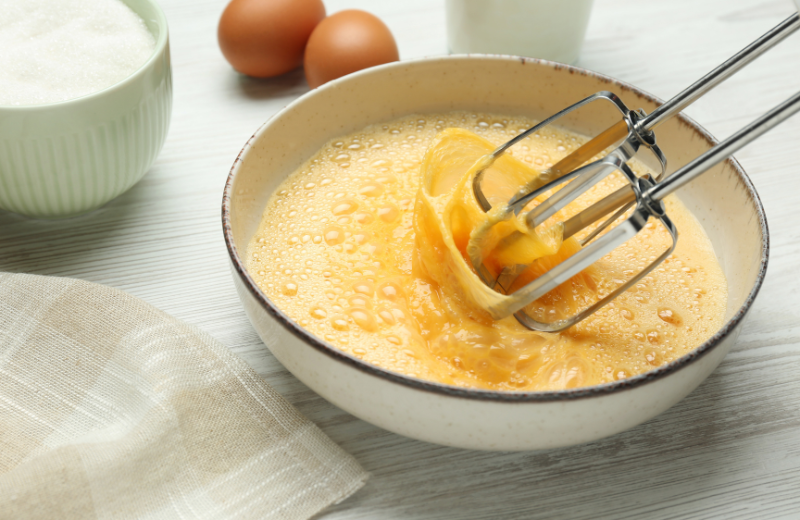
Eggs contribute both structure and lift to your cake. Beating them well ensures they hold air, but how you incorporate them can also make a difference.
In some cakes, separating the eggs and whipping the whites before folding them into the batter is a brilliant way to add extra volume. This technique is especially useful if you want to make a cake fluffier without adding extra leavening agents.
Room temperature eggs also mix more easily and evenly, which helps prevent curdling and improves the final texture.
5. Sift Dry Ingredients
This step is often skipped, but it’s an easy win for fluffier bakes. Sifting flour and baking powder helps distribute ingredients evenly and introduces a bit more air into the mixture.
While no single ingredient holds all the power to make a cake fluffier, properly handled flour plays a big role, and sifting helps set the stage for a softer crumb.
6. Check Your Oven Temperature
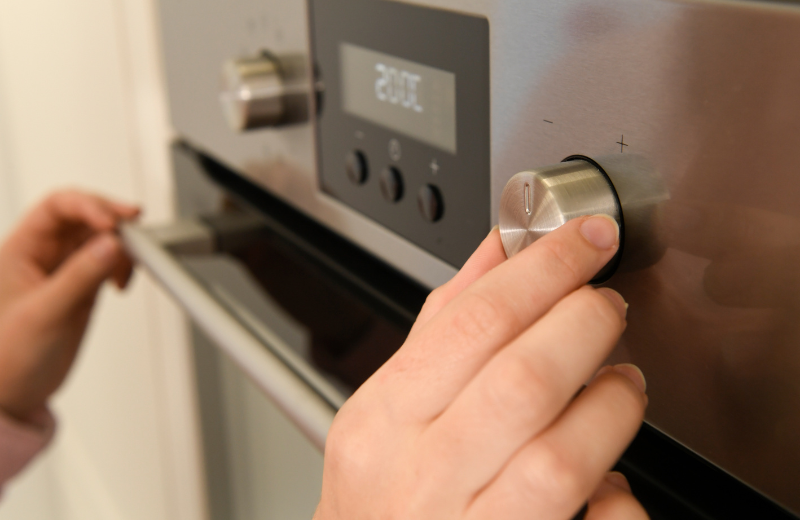
Even if your batter is perfect, baking at the wrong temperature can sabotage your results. An oven that’s too hot will cause the cake to rise quickly and then collapse, while an oven that’s too cool may lead to a heavy, undercooked centre.
If you’re finding your cakes aren’t turning out as light as you hoped, an oven thermometer might be a smart investment.
7. Measure with Accuracy
You might be surprised at how much difference a few extra grams of flour or a splash too little milk can make. Too much flour, in particular, can leave your cake feeling dry and heavy.
For best results, weigh your ingredients using digital scales. Precision is a big part of making sure your cake is nice and fluffy.
8. Don’t Overbake
Timing is everything. Overbaking dries out a cake, even if the batter was beautifully fluffy to start with.
To keep your cake moist and fluffy, start checking for doneness a few minutes before the recipe suggests. A skewer should come out with a few moist crumbs, not dry and dusty.
If your cake tends to dry out quickly, consider using a sugar syrup to brush the sponge while it’s still warm. This simple trick helps lock in moisture and is an easy way to keep the crumb soft.
9. Try Using Buttermilk or Yoghurt
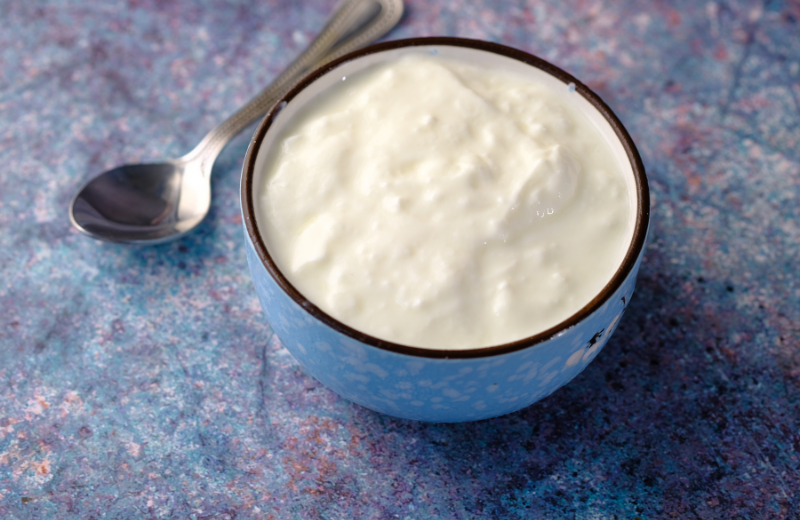
Wondering how to make a cake really moist without making it greasy? Swap out some of the milk for buttermilk or yoghurt. These ingredients add moisture, and their acidity also reacts with baking soda to improve lift.
This subtle addition can be the key to preventing dry cakes and producing a crumb that stays tender for days.
10. The Role of Fat: Butter, Oil, or Both?
Fat is essential for flavour and softness. Butter adds richness and structure, while oil helps retain moisture over time. Some of the most reliably moist cakes use a combination of both.
If you’ve been wondering what to add to cake mix to make it fluffier and moister, try experimenting with a bit of oil or switching to recipes that incorporate sour cream or full-fat yoghurt.
11. Use Cake Flour if Available
Cake flour has a lower protein content than plain flour, which means it forms less gluten and results in a finer, softer crumb.
If you don’t have cake flour on hand, you can make a substitute by replacing two tablespoons of flour with cornflour (cornstarch) per cup. It’s a small change that can have a big impact on the texture of your cakes.
12. Keep Ingredients at Room Temperature
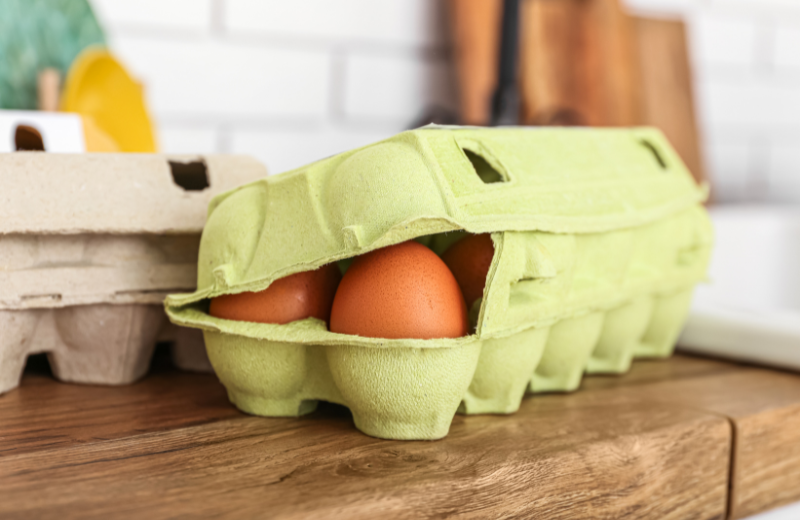
Cold ingredients don’t blend well, and that can affect the structure of your batter. Room temperature butter, eggs, and milk create a more stable emulsion and improve overall texture.
How to Rescue a Dense Cake
You can’t exactly make a dense cake fluffy once it’s baked, but there are ways to improve the eating experience. Try serving with cream, fruit compote, or soaking the layers in a simple syrup to bring back moisture.
As for your next attempt, go back over the steps above. They’re all part of learning how to make cake soft, light, and consistently successful.
Recommended for you!
Best SellersSummary: How Can I Make My Cake Light and Fluffy?
- Beat butter and sugar until pale and airy
- Use room temperature ingredients
- Mix gently once flour is added
- Choose the right leavening agents
- Sift dry ingredients
- Measure accurately
- Don’t overbake – check early
- Add ingredients like yoghurt or buttermilk for moisture
- Try oil for softer cakes
- Use cake flour when possible
- Store cakes well to keep them from drying out
Study Our Cake Baking and Decorating Diploma for £29
Getting your cake to rise beautifully and stay light and fluffy doesn’t require luck – just a little know-how and care. Once you understand what makes a cake fluffy, you’ll feel more confident tweaking recipes and spotting where things went wrong.
If you’re passionate about baking or want to develop your skills further, the Cake Baking and Decorating Diploma Course from Centre of Excellence is a fantastic next step. It’s designed to suit all levels – whether you’re just starting or looking to master advanced techniques. And right now, you can enrol for just £29.






